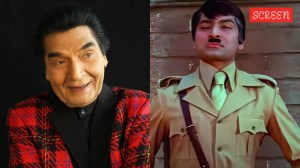ICC asks India to try out new rain-rule
Three years after V Jaydevan, a little-known engineer from Kerala, had come up with an alternate rain rule, the ICC has finally decided to g...

Three years after V Jaydevan, a little-known engineer from Kerala, had come up with an alternate rain rule, the ICC has finally decided to give it a look-in — in Indian domestic competitions, to start off with.
After much deliberation, the world body has asked India to implement the method in domestic one-dayers.
BCCI joint-secretary Goutam Dasgupta, said: “The ICC has been taking a close look at the new method (devised by Jayadevan) for some time. But the D/L system, too, meanwhile underwent a few updates. So, the ICC has decided to stick to the D/L method while it wants the J-method to be tried out on an experimental basis first. The ICC has asked us to try out the new rule in our domestic circuit this season.”
Jayadevan is scheduled to impart a detailed demonstration at the all-India umpires’ seminar in New Delhi tomorrow. He will give a comparative overview of his method as against the D/L system.
Jayadevan’s rain-rule has several advancements over the existing updated version of the D/L system lacks.
The D/L method generally tends to favour sides batting first while Jayadevan’s system does away with this bias. The rule is also believed to handle complex situations — like the multiple rain interruptions — where the D/L method doesn’t do too well.
|
J-method: Modus Operandi
|
||||
|
• Built around two curves • Settling down n. Exploiting field restrictions Story continues below this ad • Normal curve is obtained by fitting a suitable regression equation. |
||||





- 01
- 02
- 03
- 04
- 05

























